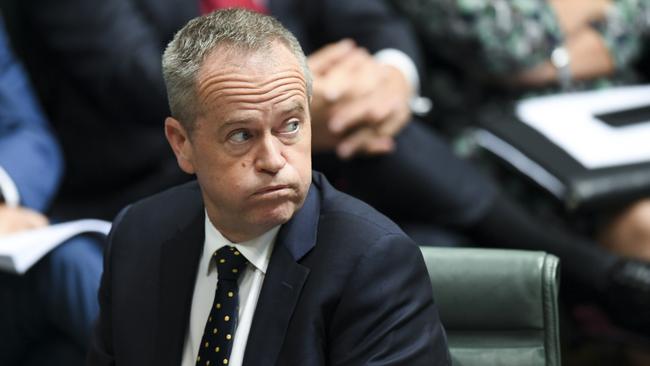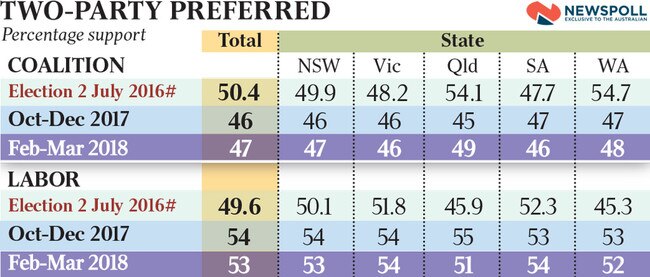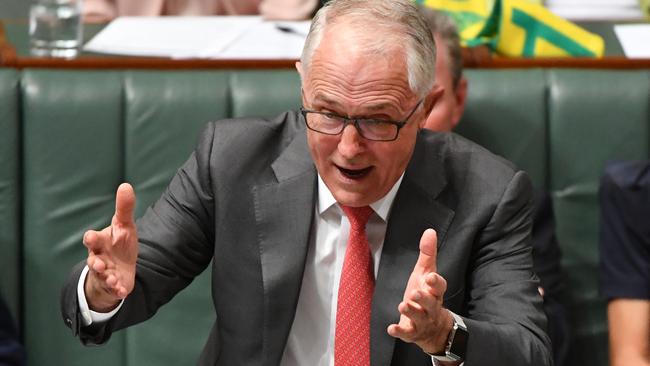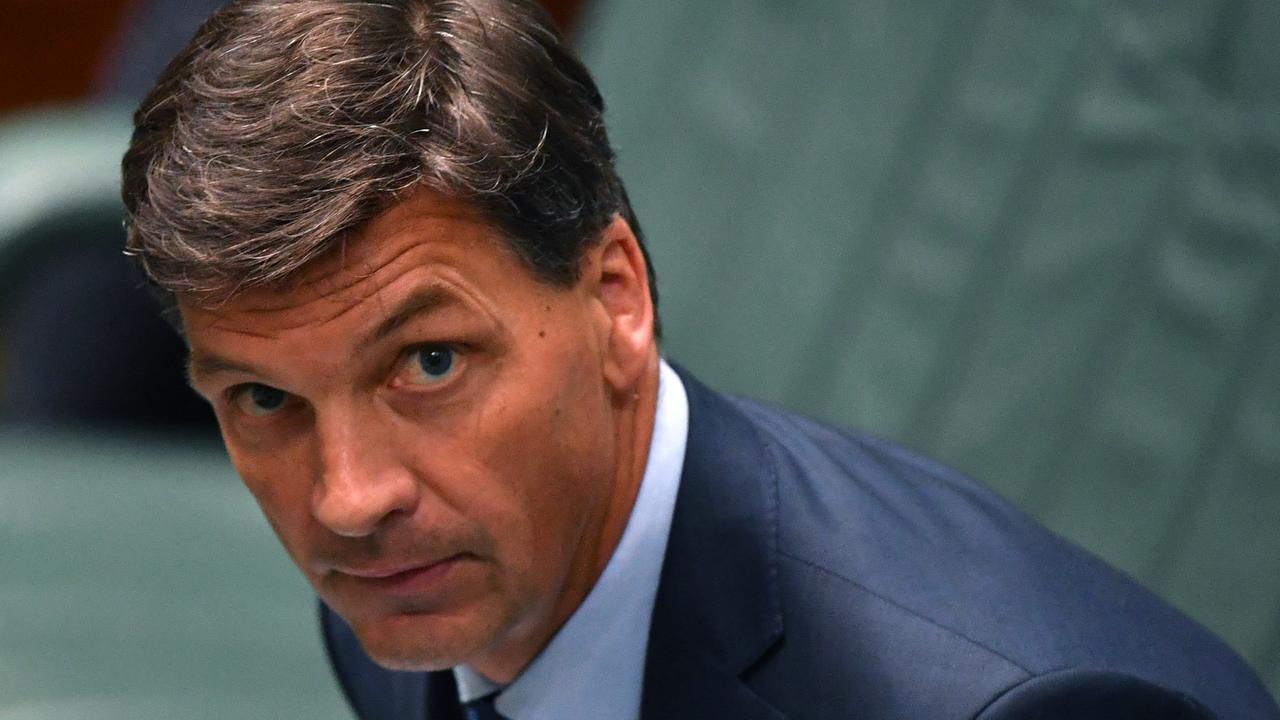Newspoll: Adani fallout hits Shorten but states turn on Coalition
EXCLUSIVE| The Labor leader’s vow to stop the coalmine has damaged him, but the Coalition is still facing a 20-seat rout.

Labor has lost ground to the LNP in the key federal battleground state of Queensland where Bill Shorten has suffered a hit to his personal ratings in a sign that a vow to stop the Adani coalmine has damaged the Opposition Leader.
However, Malcolm Turnbull would still face an election loss of more than 20 seats across the country, with Labor leading the Coalition in every state, according to analysis of Newspoll surveys conducted exclusively for The Australian in the first three months of this year.

The Prime Minister is now one bad poll short of the same 30 lost Newspolls he set as the benchmark for Tony Abbott’s failed leadership, with the government having failed to recover any electoral ground it lost in the wake of the 2016 election. While the Prime Minister can point to his personal ratings as proof voters back him over Mr Shorten, the quarterly analysis has confirmed that even on this measure, it continues to slide.
An average six-point lead over Mr Shorten as preferred prime minister for the first three months of this year is the tightest the contest between the two leaders has been since the last election.
The government, however, will be buoyed at least by a partial recovery in Queensland, which has seen the LNP lift four percentage points since the beginning of this year, with the Adani mine remaining a dominant political issue in the Sunshine State.
Mr Turnbull also appears to have re-engaged Queensland voters, with his approval ratings soaring four points as preferred prime minister since the last quarter, providing him with a greater lead in personal approval ratings over the Opposition Leader — 12 points — than in any other state.
It is now the state where Mr Shorten is also least liked, with the poll analysis covering the period during which the Labor leader came under sustained attack for his changing position on Adani.

But Labor has more than compensated for this by surging in South Australia following the collapse of Nick Xenophon’s party, with the bulk of a six-point slide for independents following the recent South Australian election going back to Labor’s primary vote ledger.
The recent gains for the Coalition in the state that holds the greatest number of marginal seats and is regarded as electorally critical for both major parties, have been made against a longer term collapse in LNP support, which saw its primary vote in Queensland drop from 43.2 per cent at the election to a record low of 32 per cent in the final quarter of last year. In the past three months this has recovered four points to 36 per cent.
The lift in Queensland for the LNP appear to have come primarily at the expense of One Nation, which has dropped back two points to 13 per cent this quarter compared to the last which covered a period in which the conservative minor party performed poorly in the Queensland state election.
The states where the Coalition performed best at the election, Queensland and Western Australia, continued to show the greatest declines. At a national level, however, the Coalition finds itself beginning this year in the same position it ended 2017, trailing Labor on an average two-party-preferred vote of 47-53.
More troubling for Liberal strategists will be Labor’s primary vote, which according to the longer term analysis, has been ahead of the Coalition’s in every quarter since the election bar one. Labor now leads the Coalition on the primary vote in every state, with a national average of 38 per cent compared to the Coalition’s 37 per cent.
With Mr Turnbull having to confront his 30th losing Newspoll this month, the quarterly poll analysis will provide little promise of a recovery in the government’s fortunes.
The Nationals have recovered some ground for the Coalition in the regions, lifting two points to 37 per cent this quarter. This is despite the Barnaby Joyce love-child scandal.
Yet it has only regained enough to draw level with Labor, which has seen its greatest gains in the bush since the 2016 election, when it recorded just 30.8 per cent, with a seven-point overall jump in its primary vote.
The Coalition, by contrast, is still seven points down on its election result of a regional primary vote of 44.2 per cent.
Labor also continues to leads the Coalition on the primary vote across the nation’s capital cities.





